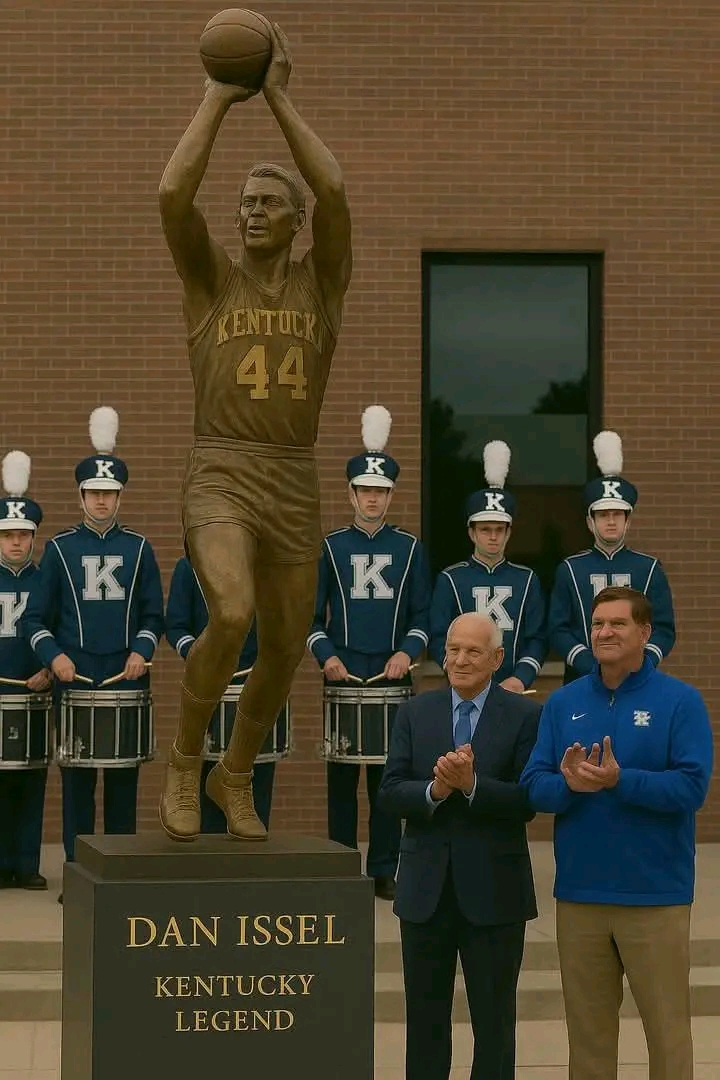Forever a Wildcat: Dan Issel Immortalized with Bronze Statue at Rupp Arena — But the Tribute Comes with an Unexpected Story Behind It
In a moment that sent waves of emotion through Big Blue Nation, the University of Kentucky unveiled a long-awaited bronze statue of basketball legend Dan Issel outside Rupp Arena. Fans erupted in applause as the towering sculpture captured Issel’s iconic stance—forever preserving the legacy of a player who defined an era of Kentucky basketball dominance. But while the honor is fitting for one of the most prolific scorers in NCAA history, the story behind the statue is far more unexpected than anyone imagined.
Issel, who starred for the Wildcats from 1967 to 1970, remains Kentucky’s all-time leading scorer with 2,138 career points. A consensus All-American, he helped elevate the program’s national profile and became a beloved figure in the Bluegrass State. Yet, for decades, Issel’s recognition at Rupp Arena was surprisingly minimal—no statue, no retired jersey ceremony, and few public acknowledgments. Many fans often asked: Why has Dan Issel been overlooked for so long?
Now, that question is finally being answered.
Sources close to the university reveal that the process of honoring Issel was delayed by a mix of internal debates and Issel’s own humble resistance to being celebrated. “Dan never sought the spotlight,” said one former UK staffer. “He believed the team came first. That’s who he was—even when the cameras were off.” But it wasn’t until a recent wave of fan-led petitions and public outcry that university officials revisited the decision and fast-tracked the statue project.
What’s even more surprising? Issel initially declined the idea.
According to reports, it took months of persuasion—especially from former teammates, family, and Coach Mark Pope—for Issel to finally agree. “He didn’t want it to be about him,” Pope shared. “But we told him: You’re not just a player, Dan—you’re a symbol of what Kentucky basketball stands for.”
Now, with the bronze statue proudly standing outside Rupp Arena, fans can honor the man who gave everything to the program. But behind the metal and marble is a deeper tale of humility, loyalty, and a legacy that almost went uncelebrated.
